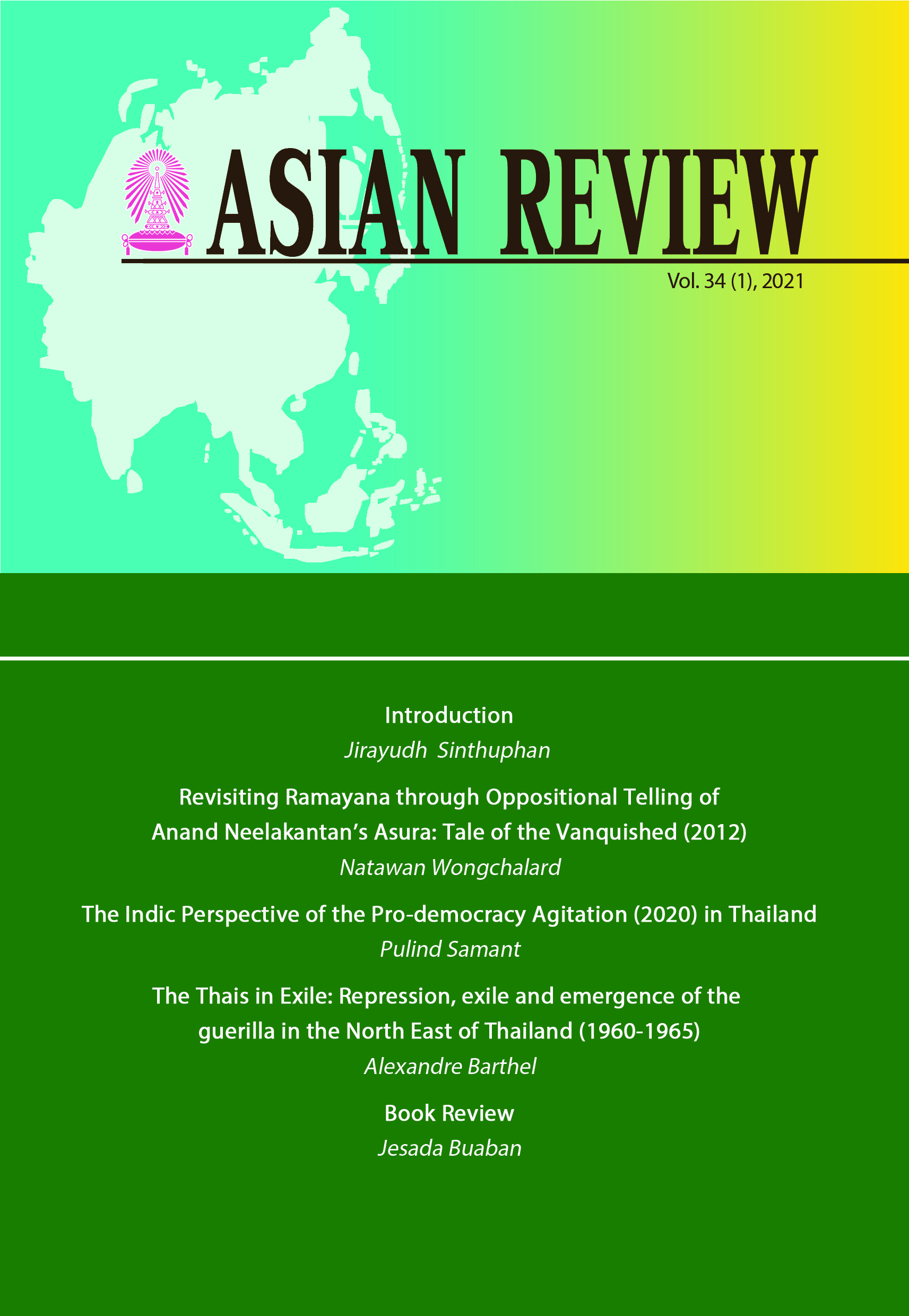The Indic Perspective of the Pro-democracy Agitation (2020) in Thailand
Keywords:
Thailand, Agitation, Indic, Civilisation, MonarchyAbstract
The current agitation in Thailand can be interpreted differently in India than it may be viewed by the world. The reason is the attack on the Thai monarchy launched by the agitators in the midst of their demands. The Thai monarchy is not only the strongest pillar of the Thai identity, but also the symbol of its Indic civilisational roots, through institutionalization of the title Rama. There is a long history of attack on the institution of monarchy elsewhere in the South East Asia region, where a pattern of fall of royalty followed by subsequent weakening of the state can be observed. From the region, Thailand can be considered as culturally closest to India. Even from the geo-strategic angle, it is an important player for India in its extended neighborhood. India is therefore right in feeling concerned about the said agitation and the future course it might take.
References
2. “The student daring to challenge Thailand’s monarchy”, BBC News. September 16, 2020. https://www.bbc.com/news/world-asia-54182002 Accessed November 10.
3. “Explained: What is Behind the Thailand Protests? What is the Government Doing?”, The Indian Express, Reuters, Bangkok. October 22, 2020 https://indianexpress.com/article/explained/thailand-protests-explained-6734960/ Accessed November 10.
4. https://en.wikipedia.org/wiki/Indosphere ; https://en.wikipedia.org/wiki/James_Matisoff
5. "Anglosphere” definition and meaning – Collins English Dictionary. https://www.collinsdictionary.com/dictionary/english/anglosphere ; Proceedings of the British Academy. 2019. "The Anglosphere: Continuity, Dissonance and Location”. The British Academy, London, November 21. https://www.thebritishacademy.ac.uk/publishing/proceedings-british-academy/proceedings-british-academy-the-anglosphere-continuity-dissonance-and-location/ ; Bennett, James C. 2004. “Explaining the Anglosphere”. The Guardian. October 28. https://www.theguardian.com/world/2004/oct/28/uselections2004.usa4
6. Coedes, George, Cowing, Susan B., and Vella, Walter. 1968. “Indianised States of South East Asia”, 253. Honolulu East-west Centre Press.
7. Majumdar Ramesh Chandra. 1937. “Ancient Indian Colonies in the Far East, Vol.II, Suvarnadvipa, Part I – Political History”, 37. Calcutta Modern Publishing Syndicate.
8. Chaloemtiarana, Thak. 2014. "Are We Them? Textual and Literary Representations of the Chinese in Twentieth-Century Thailand". Centre for South East Asian Studies Journal, Vol. 3, No. 3. December 25. Accessed October 10, 2020. https://englishkyoto-seas.org/2014/12/vol-3-no-3-thak-chaloemtiarana/
9. Charoengpong, Sawitree. “Rabindranath Tagore in Thailand: His Visit and Its Impact”, https://embassyofindiabangkok.gov.in/pdf/Rabindranath%20Tagore.pdf , Accessed September 18, 2020
10. Nehru, Jawaharlal. 1946. “The Discovery of India”, 203. John Day Co., New York.
11. Grousset, Rene (1932) and Quaritch Wales, H.G. (1933) as quoted by Nehru, Jawaharlal. 1946. “The Discovery of India”, 201 and 203 repsectively. John Day Co., New York.
12. Hirth, Friedrich. 1896. “Chao Ju-kua: A New source of Medieval Geography”, The Journal of the Royal Asiatic Society of Great Britain and Ireland, January, 65-66. Cambridge University Press.
13. Coedes, George, Cowing, Susan B., and Vella, Walter. 1968. “Indianised States of South East Asia”, 34. Honolulu East-west Centre Press.
14. Nye, Joseph S. Jr. 2004. “Soft Power: Means to Success in World Politics”, p. X. Hachette, UK.
15. Coedes, George, Cowing, Susan B., and Vella, Walter. 1968. “Indianised States of South East Asia”, 250-251. Honolulu East-west Centre Press.
16. Sanyal, Sanjeev. 2016. “The Ocean of Churn: How the Indian Ocean Has Shaped Human History”, 155-156. Penguin Random House, New Delhi.
17. Slamet, Muljana. 1968. “Collapse of Hindu-Javanese kingdom and the emergence of the Islamic Countries in the Archipelago”.
18. Freitag, Ulrike. 1997. “Hadhrami Traders, Scholars and Statesmen in the Indian Ocean, 1750s to 1960s”, edited by Ulrike Freitag and William G. Clarence-smith, 32–34. BRILL, Leiden.
19. Panikkar , K.M. 1969. “Survey of Indian History”, 96. Asia Publishing House, Bombay [Mumbai]
20. Huntington, Samuel. 1993. “The Clash of Civilisations”, 22. Foreign Affairs, Vol. 72, No. 3 (Summer, 22-49). Council on Foreign Relations.
21. The New York Times. 1990. "Laotian Royal Family Died in Prison Camp". February 8. https://www.nytimes.com/1990/02/08/opinion/l-laotian-royal-family-died-in-prison-camp-282890.html
Published
How to Cite
Issue
Section
License
Published articles are under the copyright of the Instiute of Asian Studies, Chulalongkorn University. Partially or totally publication of an article elsewhere is possible only after the consent from the editors.







